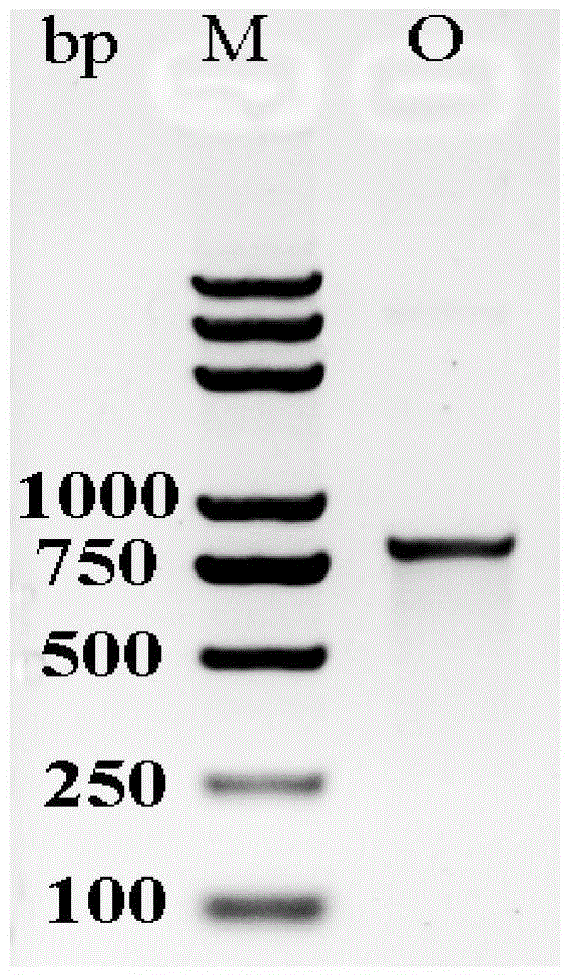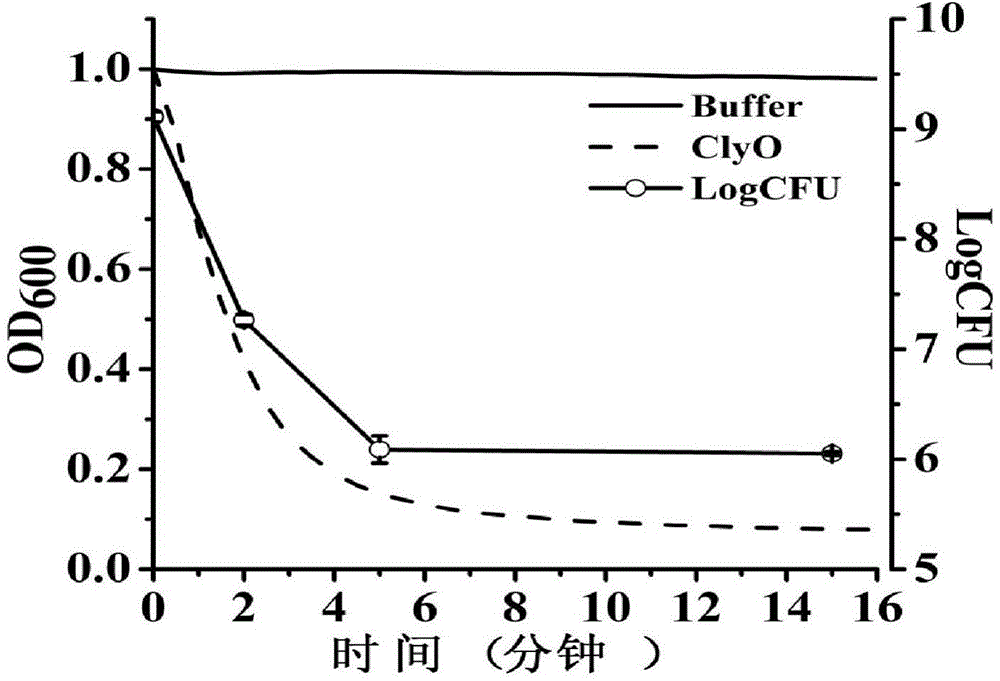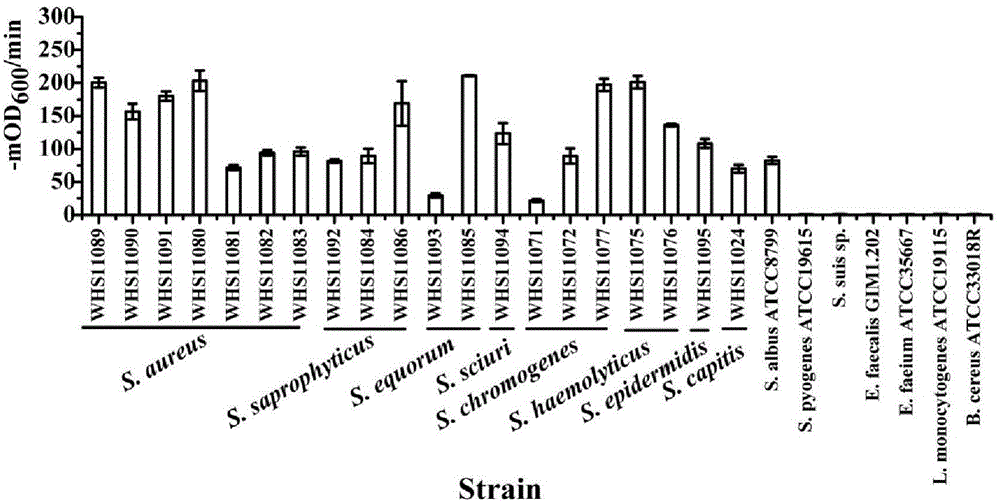Staphylococcus lyase and application thereof
A staphylococcus and lyase technology, applied in the field of biological preparations, can solve the problems of narrow pH range, inability to adapt to high protein environment, insoluble expression and other problems
- Summary
- Abstract
- Description
- Claims
- Application Information
AI Technical Summary
Problems solved by technology
Method used
Image
Examples
Embodiment 1
[0027] Embodiment 1, the construction of the lyase that can kill Staphylococcus.
[0028] (1) The DNA sequence of the ClyO gene capable of expressing the cleavage enzyme ClyO was synthesized in Shanghai Sangon Bioengineering Co., Ltd. in its entirety. The synthetic sequence was loaded into the pUC57 plasmid. Using the ClyO gene as a template, NcoI and XhoI restriction sites were added to both ends of the target gene, and the primers were designed as follows:
[0029] Forward primer: 5-TTAA CCATGG GCATGGCACTGCCTAAAACG-3 (SEQ.ID.NO.3)
[0030] NCOI
[0031] Reverse primer: 5-ATAT CTCGAG TTTAAATGTACCCCAAGC-3 (SEQ.ID.NO.4)
[0032] wxya
[0033] Using 2 μl of the gene as a template, add 1 μg of primers for PCR amplification. The PCR amplification procedure is as follows: 1) 94°C, 5min; 2) 94°C, 30sec, 62°C, 45sec, 72°C, 45sec, 30 cycles; 3 )72°C, 10min; the product was recovered by gel electrophoresis, and the electrophoresis pattern was as fol...
Embodiment 2
[0038] Embodiment 2, ClyO kills the verification of Staphylococcus aureus standard strain CCTCC AB91118
[0039] The overnight culture of Staphylococcus aureus was collected by centrifugation, washed once with phosphate buffered saline (PBS), and then resuspended in PBS solution. Take a certain amount of ClyO and mix it with the above-mentioned bacterial solution, and monitor the change of the absorption value of the mixed solution at 600nm with a microplate reader. A mixture of buffer and Staphylococcus aureus was used as a negative control. The final cracking curve obtained is shown in figure 2 . At the same time, the number of viable bacteria was calculated by diluting the plate after treatment for different times. The results show that ClyO can rapidly lyse the CCTCC AB91118 strain, resulting in a decrease in the turbidity of the bacterial liquid, which is manifested by a rapid decrease in the absorption value of the bacterial liquid at a wavelength of 600nm.
Embodiment 3
[0040] Example 3. Verification of ClyO's specificity to various staphylococci in vitro and to different strains.
[0041] In order to verify the bactericidal spectrum of ClyO, we selected several non-staphylococcus strains preserved in the inventor's laboratory and clinically isolated Staphylococcus aureus, Staphylococcus epidermidis, Staphylococcus saprophyticus, Staphylococcus equineus, Staphylococcus squirrel, Hemolyticus Staphylococcus, Staphylococcus chromogenes, and other strains were tested together. Firstly, the tested strains were cultured overnight, collected by centrifugation, washed once with PBS, and then resuspended in PBS. A certain amount of ClyO was mixed with the above-mentioned bacterial solution respectively, and at the same time, the change of the absorption value of the mixed solution at 600 nm was monitored for 30 minutes with a microplate reader. use OD 600 The reduced rate indicates the lytic effect of the different strains. At the same time, the mi...
PUM
 Login to View More
Login to View More Abstract
Description
Claims
Application Information
 Login to View More
Login to View More - R&D
- Intellectual Property
- Life Sciences
- Materials
- Tech Scout
- Unparalleled Data Quality
- Higher Quality Content
- 60% Fewer Hallucinations
Browse by: Latest US Patents, China's latest patents, Technical Efficacy Thesaurus, Application Domain, Technology Topic, Popular Technical Reports.
© 2025 PatSnap. All rights reserved.Legal|Privacy policy|Modern Slavery Act Transparency Statement|Sitemap|About US| Contact US: help@patsnap.com



